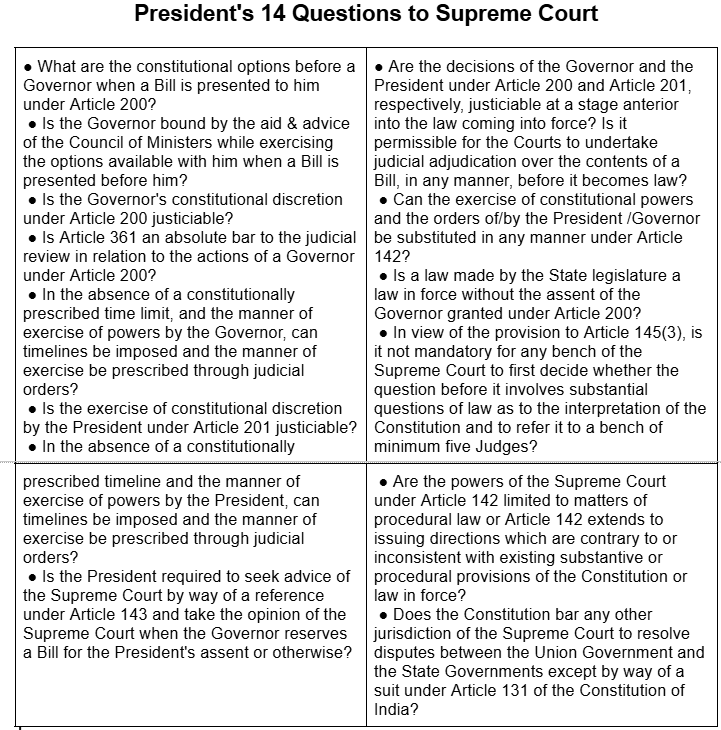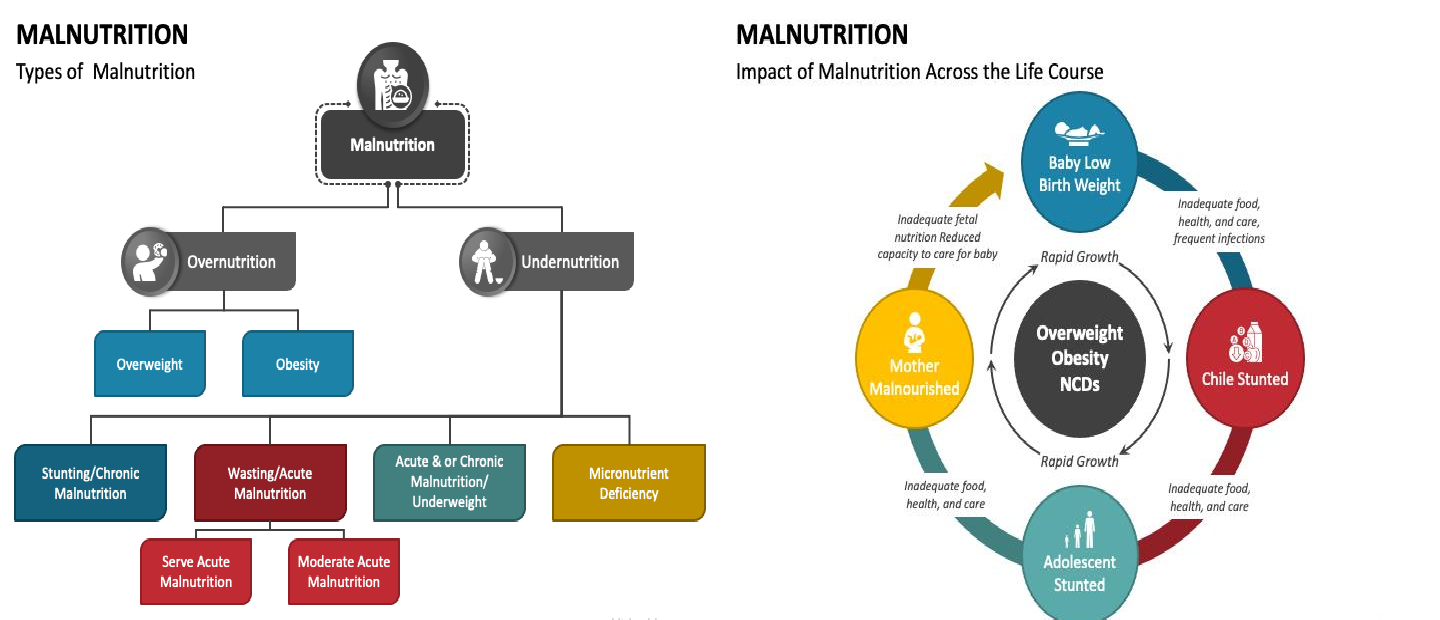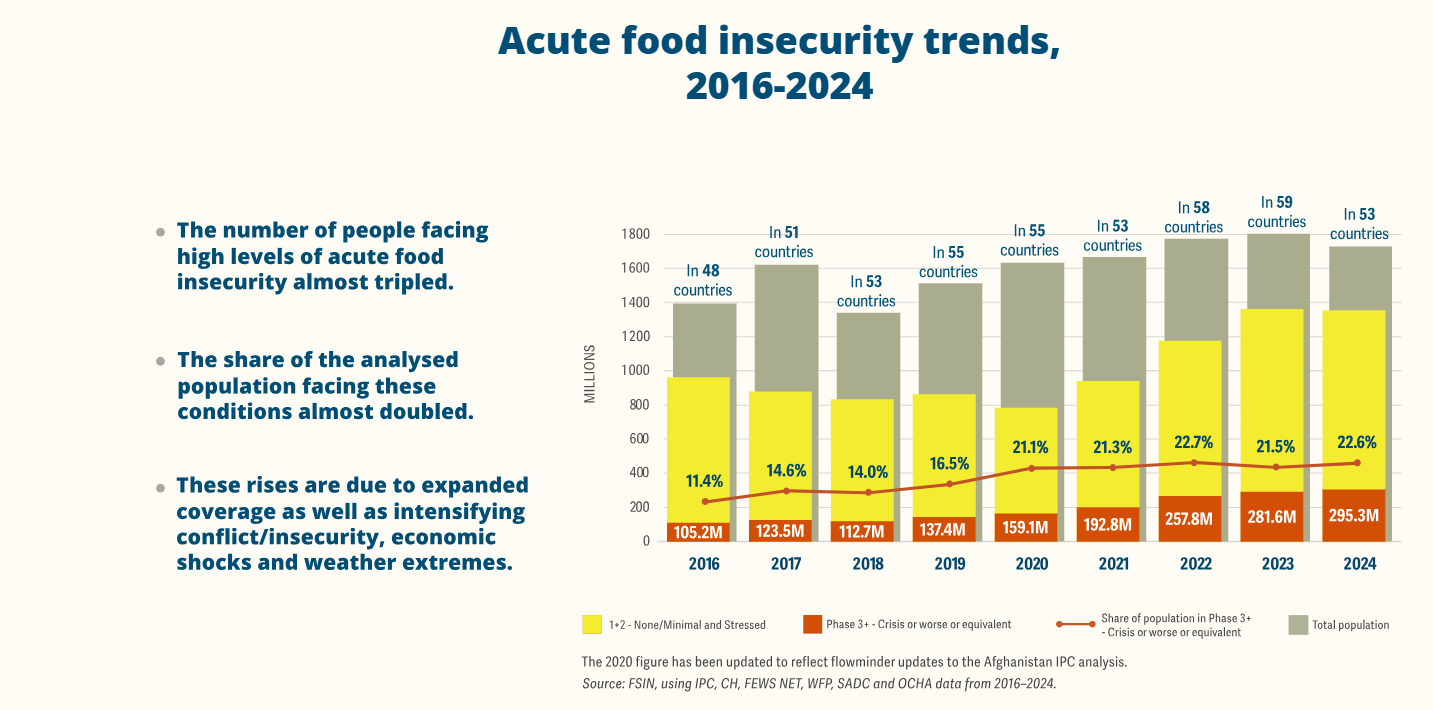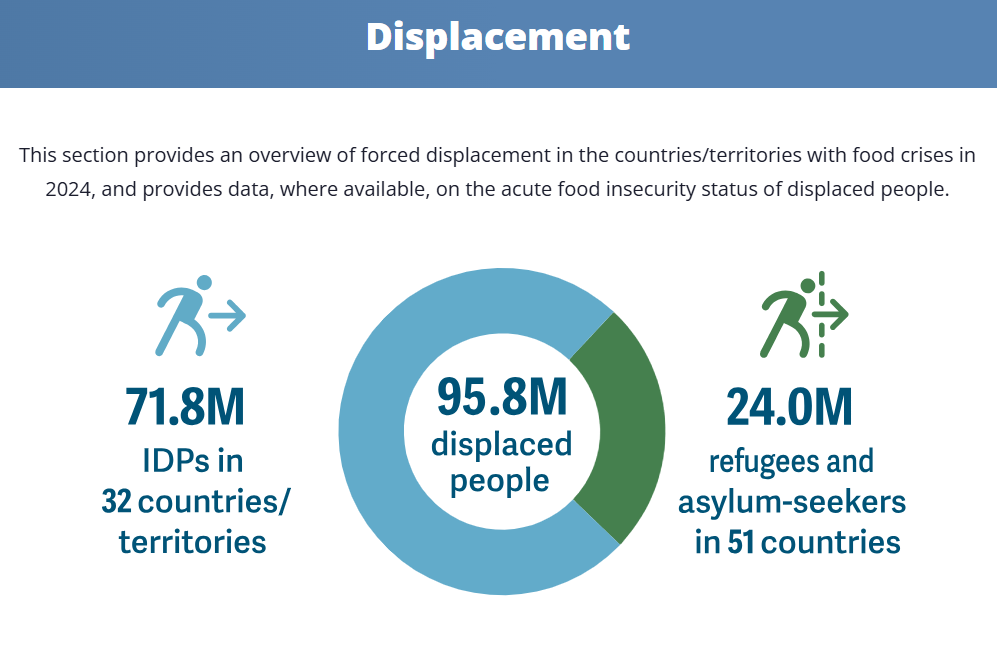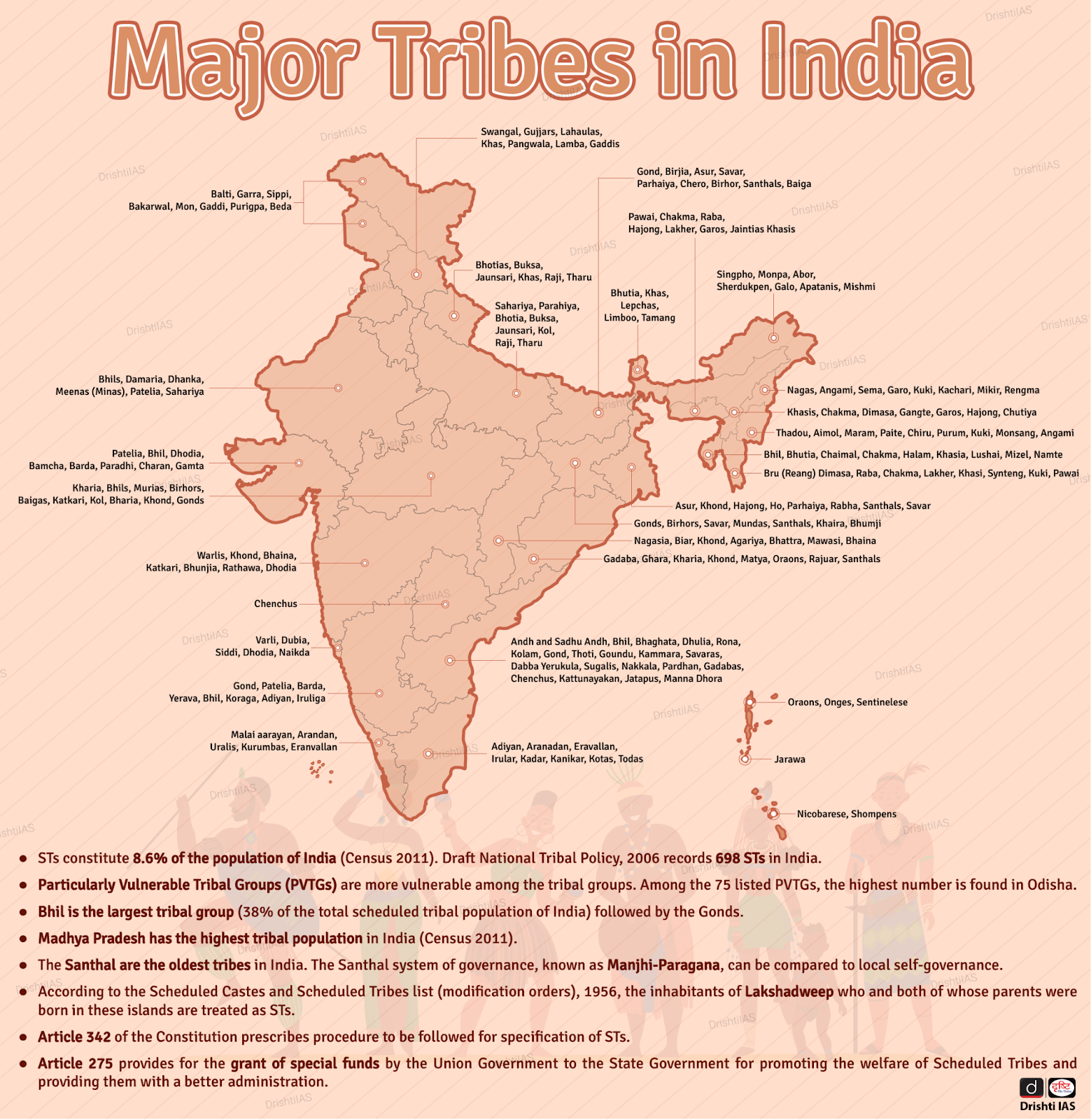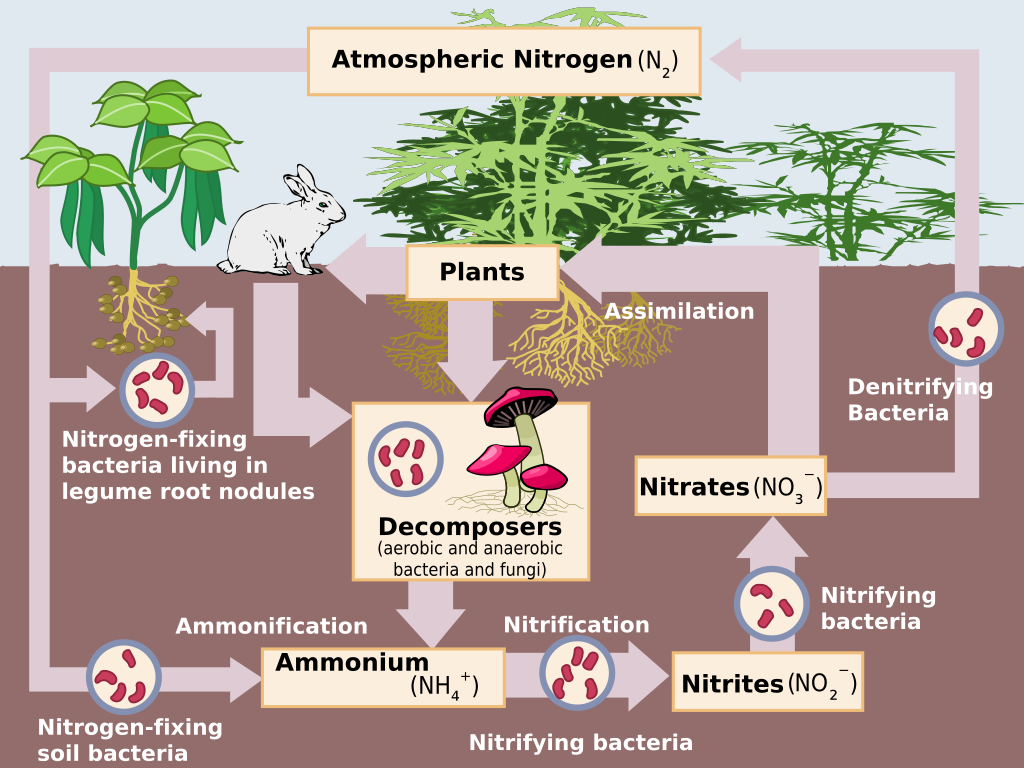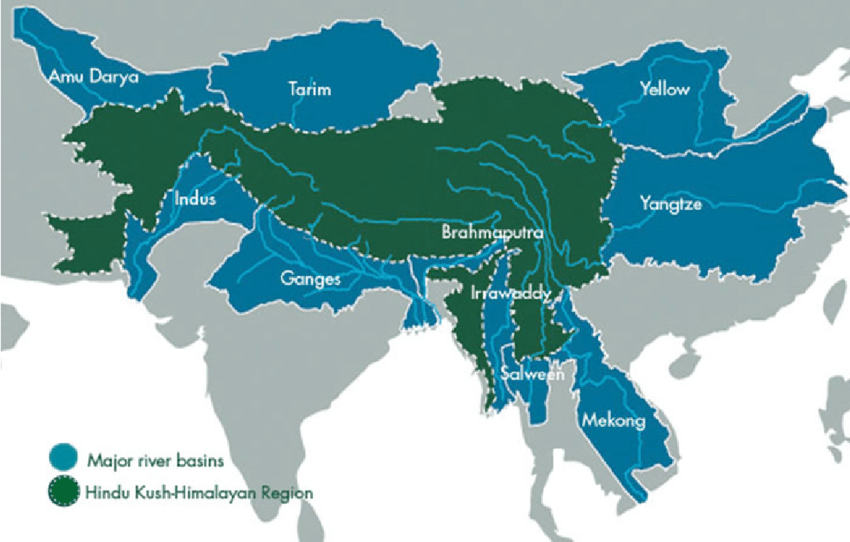Indian Polity
Presidential Reference under Article 143
For Prelims: Article 142, Article 143, Supreme Court, Governor, Articles 200 and 201, Union Council of Ministers, Article 145 (3), Fundamental Rights, Directive Principles, Collegium System, Mandamus.
For Mains: Significance of Article 143 of the Indian Constitution, Conflict between executive and judiciary on passing of bills, center-state federal tensions, Separation of powers.
Why in News?
The President has invoked Article 143 of the Indian Constitution to refer a set of 14 constitutional questions to the Supreme Court (SC) for its advisory opinion.
- This move comes after a recent SC judgement which invoked Article 142 in the State of Tamil Nadu v The Governor of Tamil Nadu Case, 2023 imposing timelines on Governors and the President to act on Bills passed by state legislatures.
- The reference raises 14 key questions, primarily concerning Articles 200 and 201, and the justiciability of executive actions before a Bill becomes law.
What is Article 143 of the Indian Constitution?
- About: Article 143 (Advisory jurisdiction) empowers the President of India to seek the SC’s advisory opinion on any question of law or fact that is of public importance and is likely to arise or has already arisen.
- This provision establishes the SC’s advisory jurisdiction, which is exclusive to the President.
- Types of Questions Referred:
- Article 143 (1): The President may refer any question of law or fact of public importance which has arisen or which is likely to arise. Here, the Supreme Court may tender or may refuse to tender its opinion to the president.
- E.g., the Supreme court has declined to provide its opinion in 1993 with respect to the Ram Janmabhoomi case.
- Article 143(2): It allows the President to refer disputes arising from out of any pre-constitution treaty, agreement, covenant, sanad or other similar instruments. The SC must tender its opinion to the President.
- Article 143 (1): The President may refer any question of law or fact of public importance which has arisen or which is likely to arise. Here, the Supreme Court may tender or may refuse to tender its opinion to the president.
- Nature of the Advise: In both the cases, the opinion expressed by the SC is only advisory and not a judicial pronouncement.
- Hence, it is not binding on the president; she may follow or may not follow the opinion.
- However, it facilitates the government to have an authoritative legal opinion on a matter to be decided by it.
What are the Key Facts Regarding the Presidential Reference?
- About: Article 143 gives the President the power to refer any question of law or fact of public importance to the SC for its opinion, based on the Union Council of Ministers' advice.
- Article 145 (3) requires such references to be heard by a bench of at least five judges.
- Historical Context: Advisory jurisdiction under Article 143 is derived from the Government of India Act, 1935, which allowed the Governor-General to refer legal questions to the federal court.
- The Canadian Constitution allows its SC to provide legal opinions, while the US SC refrains from giving advisory opinions to uphold a strict separation of powers.
- Past Instances of Such References: There have been about 15 Presidential references to the Supreme Court under Article 143. Some landmark cases include:
- Delhi Laws Act case (1951): Defined the scope of delegated legislation.
- Kerala Education Bill (1958): Harmonized Fundamental Rights with Directive Principles.
- Berubari case (1960): Held that territorial cession requires a constitutional amendment.
- Keshav Singh case (1965): Explained legislative privileges.
- Presidential poll case (1974): Allowed elections despite vacancies in State Assemblies.
- Third Judges case (1998): Established the Collegium system for judicial appointments.
- Key Issues in Current Reference: It raises issues about whether courts can impose timelines on President and Governors not explicitly stated in the Constitution (especially under Articles 200 and 201).
- It also questions the extent of the SC’s power under Article 142 (complete justice provision).
- Overturning Power through Advisory Reference: According to the 1991 Cauvery Water Disputes Tribunal opinion, Article 143 cannot be used to review or reverse settled judicial decisions.
- However, the government may still seek review or curative petitions to challenge the State of Tamil Nadu v The Governor of Tamil Nadu Case, 2023 verdict.
What is the Significance of the Presidential Reference System?
- Constitutional Interpretation of Roles: It can clarify the constitutional roles of the President and Governors, and whether non-time-bound executive actions can be subject to judicial oversight.
- Reaffirmation of Democratic Structure: It offers a chance to redefine the balance of power among the legislature, executive, and judiciary, ensuring constitutional order by preventing overreach.
- Procedural Certainty: It resolves procedural uncertainties in intergovernmental matters and may help establish guidelines for resolving institutional friction in future.
- Smooth Federal Functioning: In a federal structure, this reference helps define jurisdictional boundaries between the Centre and States, promoting cooperative federalism through a clear legal framework for dispute resolution.
What are Challenges in the Presidential Reference System?
- Non-Binding Nature: The Supreme Court’s Article 143 advice is not legally binding on the President, limiting its practical impact and raising doubts about its effectiveness.
- Potential Politicization: The reference risks political misuse, especially when the ruling government seeks to validate controversial decisions or question adverse rulings, potentially compromising judicial neutrality and involving the judiciary in political disputes.
- Unclear Threshold for Referral: The Constitution lacks a clear standard for what constitutes a "question of law or fact of public importance," granting the executive broad discretion that may result in references lacking true constitutional significance.
- Institutional Tensions: Referrals often arise from judiciary-executive disputes, potentially heightening tensions and undermining judicial independence, especially when revisiting settled judgments.
- No Timeline for Response: The Constitution sets no time limit for the Supreme Court to respond to a reference, risking delays in urgent matters that hinder governance and policy clarity.
Conclusion
The presidential reference under Article 143 marks a crucial constitutional development. It seeks to clarify the limits of judicial intervention, the scope of Article 142, and the justiciability of executive actions, thereby shaping the separation of powers and reinforcing India’s federal democratic structure through greater constitutional clarity.
|
Drishti Mains Question: Q.Critically assess the scope of Article 143 in settling constitutional ambiguities. How has it evolved through past references made by the President? |
UPSC Civil Services Examination, Previous Year Question (PYQ)
Prelims
Q. The power of the Supreme Court of India to decide disputes between the Centre and the States falls under its (2014)
(a) advisory jurisdiction
(b) appellate jurisdiction
(c) original jurisdiction
(d) writ jurisdiction
Ans: (c)
Q. Consider the following statements: (2010)
The Supreme Court of India tenders advice to the President of India on matters of law or fact
- on its own initiative (on any matter of larger public interest).
- if he seeks such an advice.
- only if the matters relate to the Fundamental Rights of the citizens.
Which of the statements given above is/are correct?
(a) 1 only
(b) 2 only
(c) 3 only
(d) 1 and 2
Ans: (b)
Mains
Q. Do you think that the Constitution of India does not accept the principle of strict separation of powers rather it is based on the principle of ‘checks and balance’? Explain. (2019)


Governance
Gendered Malnutrition in India
For Prelims: POSHAN Abhiyaan, National Family Health Survey, Anaemia, Integrated Child Development Scheme
For Mains: Women and Child Nutrition in India, Socio-economic determinants of gender-based malnutrition
Why in News?
India’s free foodgrain programme currently covers approximately 800 million people, yet challenges related to hunger and malnutrition persist, particularly among women and girls.
- Despite economic growth and the implementation of POSHAN Abhiyaan (Prime Minister’s Overarching Scheme for Holistic Nourishment), gender-based nutritional disparities remain stark.
What are the Factors Behind Gendered Malnutrition in India?
- Higher Rates of Anaemia and Underweight: According to National Family Health Survey (NFHS)-5, 57% of women aged 15–49 are anaemic, compared to just 26% of men. Nearly 1 in 5 women are underweight.
- Women have higher nutritional needs during menstruation, pregnancy, and lactation. These physiological demands, if unmet, exacerbate deficiencies such as anaemia and underweight status, impacting both maternal and child health.
- Limited Education: As per Census 2011, the overall literacy rate in India is 72.98%, with a significant gender gap 80.9% for males and only 64.63% for females.
- This disparity in education affects women's awareness about nutrition, health practices, and access to healthcare services, contributing to gendered malnutrition.
- Entrenched Social Norms: In many economically disadvantaged Indian households, food distribution is unequal where women and girls often eat last and receive the least.
- Malnutrition in such cases reflects not only food scarcity but also deep-rooted social injustice and gender-based discrimination.
- Cultural biases that prioritize the nutritional needs of men further worsen health outcomes for women.
- Economic Dependency: Around 49% of women lack decision-making power over their earnings, which translates to compromised nutrition. Economic vulnerability restricts women’s access to nutritious food, perpetuating malnutrition.
- Policy Gaps: Despite large investments (Rs 24,000 crore for 2022-23), POSHAN Abhiyaan had utilized only 69% of its funds by December 2022.
- The scheme has created awareness about nutrition, but failed to improve key outcomes, like reducing anaemia or undernutrition among women.
- POSHAN 2.0 remains isolated from schemes aimed at women’s economic empowerment. Nutritional interventions alone are insufficient if women lack the financial means and agency to access nutritious food.
What is the POSHAN Abhiyaan?
- About: POSHAN Abhiyaan (formerly known as the National Nutrition Mission), is the flagship nutrition mission of the Government of India launched in 2018.
- Its primary aim is to improve the nutritional outcomes for children (0–6 years), adolescent girls, pregnant women, and lactating mothers in a time-bound manner.
- It targets to reduce stunting, under-nutrition, anaemia (among young children, women and adolescent girls) and reduce low birth weight by 2%, 2%, 3% and 2% per annum respectively.
- It promotes behavioural change through Jan Andolan (People’s Movement) and the development of Poshan Vatikas (Nutri-Gardens) to ensure local and diverse access to nutritious food.
- Pillars of Poshan Abhiyaan:
- Access to Quality Services: Providing essential health services through schemes like Integrated Child Development Scheme (ICDS) , National Health Mission (NHM), and Pradhan Mantri Matru Vandana Yojana (PMMVY), especially during the first 1,000 days of a child’s life.
- Cross-Sectoral Convergence: Coordinating efforts across multiple ministries, including water and sanitation under the Swachh Bharat Mission and drinking water access through the National Drinking Water Mission.
- Leveraging Technology: Tools like the Poshan Tracker application enable real-time data collection and intervention.
- Jan Andolan: Community engagement is key to driving mass awareness and encouraging behavioral change around nutrition.
- POSHAN 2.0: Initially launched as a three-year programme, POSHAN Abhiyaan was expanded in 2021 into Mission POSHAN 2.0, which integrated multiple nutrition-related schemes under a single umbrella.
- These include the ICDS – Anganwadi Services, Supplementary Nutrition Programme, POSHAN Abhiyaan, Scheme for Adolescent Girls, and the National Crèche Scheme.
- This integrated initiative is now implemented as Mission Saksham Anganwadi and POSHAN 2.0, commonly referred to as POSHAN 2.0.
- Implementation and Funding: Poshan 2.0 is a Centrally-sponsored program, with a cost-sharing ratio of 60:40 between the Central and State Governments.
- Progress: Mission Poshan 2.0 covers an impressive 8.9 crore children (0-6 years). Poshan Abhiyan benefits 69.42 lakh Pregnant Women (PW) and 42.54 lakh Lactating Mothers (LM).
What Measures can be Taken to Address Gendered Malnutrition in India?
- Financial Independence and Nutrition: Research by Nobel Laureate Esther Duflo shows that women who control financial resources tend to prioritize nutrition and child well-being.
- Despite a rise in female labour force participation from 23% in 2017–18 to 47.6% in 2023-24, most women remain in low-paying, insecure jobs, earning 53% less than men on average.
- This underscores that workforce entry alone is insufficient, what’s needed are secure, fairly paid jobs.
- Empowering women through skill training, financial literacy, and credit access is key to improving nutrition outcomes.
- Integrated Approach to Nutrition and Livelihood: POSHAN 2.0 should integrate with skill development, microfinance, and employment schemes to empower women economically. Joint monitoring of health, nutrition, and livelihood parameters in high-malnutrition districts is essential.
- Use Anganwadi centres as multi-service hubs, not only for nutrition and antenatal care but also for skill-building, financial literacy, and access to government livelihood schemes.
- Health workers should be trained to link women with government schemes like Jan Dhan Yojana and Stand Up India.
- Targeted Government Initiatives: Schemes like PM Mudra Yojana and Deendayal Antyodaya Yojana need targeted interventions for women in high-malnutrition districts.
- Setting Measurable Targets: Define clear goals not only for reducing anaemia and stunting but also for boosting women's financial independence and decision-making capacity. Regular audits and transparent fund utilization reports should be mandatory.
- Breaking Socio-Cultural Barriers: Promote community-led initiatives to change societal norms around food distribution and women’s nutrition are crucial.
- Campaigns should focus on shifting perceptions that prioritize men’s nutrition over women’s health.
|
Drishti Mains Question: "Despite high levels of investment and policy attention, gendered malnutrition persists in India." Discuss. |
UPSC Civil Services Examination, Previous Year Questions (PYQs)
Prelims
Q. Which of the following are the objectives of ‘National Nutrition Mission’? (2017)
- To create awareness relating to malnutrition among pregnant women and lactating mothers.
- To reduce the incidence of anaemia among young children, adolescent girls and women.
- To promote the consumption of millets, coarse cereals and unpolished rice.
- To promote the consumption of poultry eggs.
Select the correct answer using the code given below:
(a) 1 and 2 only
(b) 1, 2 and 3 only
(c) 1, 2 and 4 only
(d) 3 and 4 only
Ans: (a)
Q. Which of the following is/are the indicator/indicators used by IFPRI to compute the Global Hunger Index Report? (2016)
- Undernourishment
- Child stunting
- Child mortality
Select the correct answer using the code given below:
(a) 1 only
(b) 2 and 3 only
(c) 1, 2 and 3
(d) 1 and 3 only
Ans: (c)


Social Issues
Global Report on Food Crises 2025
For Prelims: Global Network Against Food Crises (GNAFC), Food Security Information Network (FSIN), Global Report on Food Crises (GRFC), Malnutrition, Acute Food Insecurity, El Nino, United States Agency for International Development (USAID).
For Mains: Status of severity of acute food insecurity and nutrition crisis (malnutrition) worldwide, Causes and way forward for tackling acute food insecurity and nutrition crisis (malnutrition).
Why in News?
The Global Report on Food Crises (GRFC) 2025 has revealed that more than 295 million people across 53 countries experienced acute hunger, an increase of 13.7 million compared to 2023.
- The report highlights a deepening global food insecurity crisis fueled by ongoing conflicts, severe climate events, economic disruptions, and forced displacement.
Global Report on Food Crises (GRFC)
- The Global Report on Food Crises (GRFC), 2025 has been published by the Global Network Against Food Crises (GNAFC) in collaboration with the Food Security Information Network (FSIN) .
- The GRFC is an annual publication that provides a comprehensive analysis of acute food insecurity and nutrition crisis (malnutrition) worldwide.
- Acute food insecurity occurs when disruptions in food availability, access, utilization, or stability threaten lives or livelihoods.
- A nutrition crisis arises when factors like food scarcity, disease, conflict, and poor healthcare lead to high acute malnutrition in children aged 6–59 months.
What are the Key Drivers of Food Insecurity as per GRFC 2025 Report?
- Conflict & Displacement: Conflict drives food insecurity in 20 countries, affecting 139.8 million people and causing most Catastrophe ( Integrated Food Security Phase Classification (IPC)- 5 i.e., starvation, death, or severe malnutrition) cases, especially in Nigeria, Sudan, and Myanmar.
- Additionally, global acute malnutrition cases in the top 10 affected countries rose from 26.9 million in 2023 to 30.4 million in 2024, with the worst crises in Sudan, and Gaza.
- Extreme Weather Event & Displacement: Rising temperatures, floods, and El Nino caused crop failures, damaging food supply and increasing malnutrition risks.
- It has fueled food insecurity in 18 countries, affecting 96.1 million people, while in 2024, 95.8 million displaced individuals—75% internally displaced—resided in the 53 food-crisis countries.
- Economic Shocks: It drives food insecurity in 15 countries (e.g., South Sudan), affecting 59.4 million people by disrupting incomes, jobs, and food supply chains, leading to higher food prices, lower purchasing power, and reduced access to nutritious food.
- Funding Cuts: The abrupt end of United States Agency for International Development (USAID) funding in 2025 has hit humanitarian efforts risking severe malnutrition and death for 14 million children in Afghanistan, DRC, Ethiopia, Haiti etc.
- Weak Governance: Food insecurity drivers worsen existing vulnerabilities like weak health systems, fragile economies, and political instability, while poor data limits effective response and monitoring.
What are the Socio-Economic Implications of Food Crises on Global Development?
- Poverty Intensification: Food crises disrupt local agro-economies, especially where agriculture dominates, and rising food prices fuel inflation, reducing low-income purchasing power.
- Human Capital Loss: Food crises severely impact nutritional outcomes, especially among children and pregnant women, with over 735 million people chronically undernourished globally as per Global Hunger Index 2023.
- Nutrition-related factors contribute to about 45% of deaths in children under 5 years of age.
- Social Instability: Food shortages often trigger civil unrest and contribute to forced migration. The United Nations High Commissioner for Refugees (UNHCR) reports 23.5 million climate-displaced individuals, many of whom flee due to crop failure and food insecurity.
- Gender Inequality: Food crises disproportionately affect women, who are often responsible for household nutrition but have less access to land, credit, and aid.
- As per UN Women, it is estimated that 60% of chronically hungry people are women and girls.
- Impairment of Educational Systems: Children affected by food crises often experience higher dropout rates due to hunger or the need to support household incomes.
- While the global number of out-of-school children fell by 9 million from 2015-2021, it has increased by 6 million since then, due to stagnation worldwide in food supply.
How can Food Insecurity and Nutrition Crises be Addressed?
- Nutrition Information Systems: Strong early warning systems allow needs of vulnerable groups to be anticipated and addressed before they become severe and widespread.
- For instance, strong early warning systems contributed to preventing famine (IPC Phase 5) in Somalia in 2022–2023.
- Integrated Food Security: Develop comprehensive food security and nutrition systems at country and regional levels, using combined agricultural and livelihood data to identify vulnerable groups, understand shocks, and tailor assistance.
- Increase emergency agricultural aid, which receives only 3% of humanitarian food funding (2016-2024).
- Climate Resilience: Improving agricultural productivity, building conflict-resilient supply chains, and adopting climate-smart farming together reduce vulnerability and support economic recovery amid shocks.
- Link food security with peacebuilding, protect farmers and markets in conflict zones, and rebuild rural economies to reduce hunger from displacement.
- Agrifood Systems Transformation: Investing in agriculture can improve diet affordability, food production, and supply chains, crucial for severely food insecure countries with protracted food crises where most people depend on farming.
- Improve nutrition by expanding therapeutic feeding, fortifying staples, and promoting dietary diversity.
Conclusion
The GRFC 2024 report highlights a worsening global hunger crisis, driven by conflict, climate shocks, and economic instability. With 295 million facing acute food insecurity and funding cuts threatening aid, urgent action is needed—scaling climate-resilient agriculture, strengthening nutrition programs, and boosting humanitarian support—to break the cycle of hunger and malnutrition.
|
Drishti Mains Question: What are the key drivers of acute food insecurity globally, and how do conflict and climate change exacerbate this crisis? Discuss with examples. |
UPSC Civil Services Examination Previous Year Question (PYQ)
Prelims
Q. With reference to the provisions made under the National Food Security Act, 2013, consider the following statements: (2018)
- The families coming under the category of ‘below poverty line (BPL)’ only are eligible to receive subsidised food grains.
- The eldest woman in a household, of age 18 years or above, shall be the head of the household for the purpose of issuance of a ration card.
- Pregnant women and lactating mothers are entitled to a ‘take-home ration’ of 1600 calories per day during pregnancy and for six months thereafter.
Which of the statements given above is/are correct?
(a) 1 and 2 only
(b) 2 only
(c) 1 and 3 only
(d) 3 only
Ans: (b)
Q. The FAO accords the status of ‘Globally Important Agricultural Heritage System (GIAHS)’ to traditional agricultural systems. What is the overall goal of this initiative? (2016)
- To provide modern technology, training in modern farming methods and financial support to local communities of identified GIAHS so as to greatly enhance their agricultural productivity.
- To identify and safeguard eco-friendly traditional farm practices and their associated landscapes, agricultural biodiversity and knowledge systems of the local communities.
- To provide Geographical Indication status to all the varieties of agricultural produce in such identified GIAHS.
Select the correct answer using the code given below:
(a) 1 and 3 only
(b) 2 only
(c) 2 and 3 only
(d) 1, 2 and 3
Ans: (b)
Mains
Q. How far is the Integrated Farming System (IFS) helpful in sustaining agricultural production? (2019)


Important Facts For Prelims
GeM’s 8th Incorporation Day
Why in News?
On its 8th Incorporation Day, Government e Marketplace (GeM) reaffirmed its transformative role in driving inclusive economic growth and digital governance in India.
- GeM was incorporated on 17th May 2017 under the Companies Act, 2013.
What is Government e Marketplace (GeM)?
- About: GeM is an online platform to facilitate procurement of goods and services by various government departments and public sector units.
- It was launched on 9th August 2016 by the Ministry of Commerce and Industry.
- Objective: It ensures transparency, efficiency, and fairness in government procurement, streamlining processes and reducing corruption.
- Independent reviews, including the World Bank, report nearly 10% cost savings in government procurement, with nearly 97% of transactions fee-free and reductions of 33%-96% (capped at Rs 3 lakh) for large orders.
- User base: It serves as the Public Procurement Portal for purchasing goods and services across all Central and State Government Ministries, Departments, Public Sector Units (PSUs), and their affiliates.
- Product Range: It offers a wide range of products and services, e-bidding, reverse e-auction, and demand aggregation.
- The Ministry of Finance has authorized and made purchases through GeM mandatory for government users under the General Financial Rules, 2017.
- Ownership: It is managed by GeM SPV (Special Purpose Vehicle), a completely government-owned (100%), not-for-profit entity established under the Ministry of Commerce and Industry.
- Inclusivity: It empowers diverse Indian entrepreneurs, including MSEs, startups, women-led enterprises, artisans, and weavers.
- Over 10 lakh MSEs, 1.3 lakh artisans and weavers, 1.84 lakh women entrepreneurs, and 31,000 startups are now part of the GeM ecosystem.
- Progress: GeM’s user base has tripled, now including over 1.64 lakh buyers and 4.2 lakh active sellers, offering 10,000+ product categories and 330+ services.
- Pan-India Adoption: GeM is now adopted in all 36 States and UTs, with Uttar Pradesh leading and eight states, including Maharashtra, Gujarat, and Assam, mandating its use.
- Technological Advancement: It has launched GeMAI, India’s first generative AI-powered chatbot in the public sector, supporting voice and text in 10 Indian languages, to improve user support and inclusive service delivery.


Rapid Fire
SC Strikes Down Ex-Post Facto Environmental Clearances
The Supreme Court (SC) of India has declared ex-post facto environmental clearances (ECs) (granted after a project has already commenced) as illegal, and has invalidated the 2017 Environment Ministry notification and the 2021 Office Memorandum (OM) that permitted retrospective clearances for projects.
- SC noted that the concept of post-clearance approval is in derogation of Article 21 (Right to life in a pollution-free environment) and Article 14 (right to equality before law), as the OM applied to all project proponents who “were fully aware” of the consequences of violations.
- However, the judgment allowed ECs already granted under the 2017 and 2021 regime to remain valid, avoiding retroactive disruption.
- The SC criticized the post-facto clearance regime, citing past judgments (Common Cause v. Union of India (2017) and Alembic Pharmaceuticals v. Rohit Prajapati (2020)) to reaffirm that ex-post facto approvals violate environmental law.
- It held that the 2021 OM effectively legalized starting projects without prior clearance, defying earlier rulings and fundamental principles of environmental jurisprudence.
- The SC noted that prior clearance is mandatory under the Environment Impact Assessment Notification, 2006, to scrutinize a project’s impact on the environment, natural resources, human health, and social infrastructure.
- The Court emphasized that development cannot come at the cost of environmental degradation and reaffirmed the constitutional duty under Article 51A(g) to protect nature.
| Read more:Post-Facto Environmental Clearances |


Rapid Fire
India's Commitment to UN Peacekeeping
At the United Nations Peacekeeping (UNPK) Ministerial 2025 meeting in Berlin, 74 member states pledged to enhance the effectiveness and adaptability of peace operations amid evolving global challenges.
- India pledged a Quick Reaction Force (QRF), One male armed police (Central Reserve Police Force (CRPF) or mixed armed police (CRPF), Women-led Police Unit, among others.
- As per UNPK data, India is currently the 4th largest troop-contributing nation with 5,375 personnel after Nepal, Rwanda and Bangladesh.
- Nearly 180 Indian peacekeepers have died in action—the highest of any troop contributor. India deployed the first all-female unit to Liberia in 2007.
- About UNPK: The first UNPK mission, United Nations Truce Supervision Organization (UNTSO), was established in May 1948 to monitor the Armistice Agreement between Israel and its Arab neighbors with a small team of military observers.
- They are deployed by the UN Security Council to support ceasefires and peace agreements and are called Blue Helmets due to the light blue color symbolizing peace on the UN flag.
- Currently, over 61,000 military and police peacekeepers from 119 countries and more than 7,000 civilian personnel serve in 11 UN Peacekeeping Missions.
| Read More: India's Commitment to UN Peacekeeping |
Rapid Fire
Kandha Tribe
Facial tattooing among Kandha tribal women in Odisha’s Kandhamal district is a fading tradition, reflecting both past trauma and present-day empowerment.
- Facial tattoos among Kandha women, applied from age 10 in geometric patterns, served as a form of protection against sexual exploitation (not decorative) by landlords, royals, and British colonizers.
- About Kandha Tribe: It is numerically highest among all the 62 tribes of Odisha, making up 17.13% of the state’s tribal population according to the 2001 Census.
- They speak Kui or Kuvi (Dravidian languages) and call themselves ‘Kui loku’, ‘Kui enju’, or ‘Kuinga’ from the Dravidian Kui and Kuvi languages.
- Nuclear families are common and joint families are rarely found.
- Their population is concentrated mainly in south and central Odisha, especially in Kandhamal, Rayagada, Koraput, and Kalahandi districts.
- Among Kandha communities, Kutia Kandha and Dongria Kandha are recognized as Particularly Vulnerable Tribal Groups (PVTGs).
- PVTG is a more vulnerable sub-group of Scheduled Tribes. India has 75 PVTGs, with Odisha having the most (13), followed by Andhra Pradesh (12).
- Dongria Kandha are recognized for opposing mining in the Niyamgiri hills, while Kutia Kandha reside in distinct homes with floors situated about 2 ft below the village road level.
| Read More: Dongria Kondh Tribe |


Rapid Fire
World Food Prize 2025
Brazilian microbiologist Mariangela Hungria has been awarded the World Food Prize 2025 for her pioneering work in Biological Nitrogen Fixation(BNF) and development of microbial technologies that reduce chemical fertiliser use.
- Mariangela pioneered rhizobia-based nitrogen fixation in legumes, this innovation reduced chemical fertilizer use, saving Brazilian farmers USD 40 billion annually, and boosted soybean production from 15 million tonnes in 1979 to an estimated 173 million tonnes by 2025.
- Her work drove Brazil’s “Micro Green Revolution” through sustainable, low-cost microbial technologies.
Biological Nitrogen Fixation(BNF):
- Biological nitrogen fixation is a natural process where certain microorganisms convert atmospheric nitrogen (N₂) into ammonia (NH₃), a form usable by plants.
- This improves soil fertility and lessens the need for chemical fertilizers.
- Key nitrogen-fixing bacteria include Rhizobium, Anabaena, Nostoc, Azotobacter, and Clostridium pasteurianum.
World Food Prize:
- It was founded in 1986 by Nobel Laureate Norman Borlaug, is a top global award recognizing contributions in improving food quantity, quality and accessibility and agriculture.
- It awards USD 500,000 annually to innovators in agriculture, nutrition, food technology, and hunger alleviation.
- The first recipient was India’s M.S. Swaminathan (1987), father of Indian green revolution.
| Read More: World Food Day 2024 |


Place In News
Tsarap Chu Conservation Reserve
Himachal Pradesh (HP) has notified the Tsarap Chu Conservation Reserve under section 36A(1) of Wildlife (Protection) Act, 1972, to protect high-altitude biodiversity and strengthen snow leopard habitats.
Tsarap Chu Conservation Reserve:
- About: It is India’s largest conservation reserve (1585 sq km area), located in Spiti Valley, and the state’s fifth, joining Darlaghat, Naina Devi, Potter Hill, and Shilli reserves.
- It is bounded by the UT of Ladakh (north), Kibber Wildlife Sanctuary and Malang Nala (east), Kabjima Nala (south), and Chandratal Wildlife Sanctuary (west).
- Significance:The area is ecologically significant as it lies in the catchment of the Charap Nala and serves as a vital wildlife corridor between Kibber Wildlife Sanctuary & Chandratal Wildlife Sanctuary (Himachal Pradesh).
- Flora & Fauna:
- It hosts a high density of Snow Leopard (“Ghost of the Mountains”), and other key fauna include Tibetan wolf, bharal (blue sheep), Himalayan ibex, kiang (wild ass) and Tibetan argali.
- Rare birds like Rose Finch, Tibetan Raven, and Yellow-billed Chough are also found.
- It hosts a high density of Snow Leopard (“Ghost of the Mountains”), and other key fauna include Tibetan wolf, bharal (blue sheep), Himalayan ibex, kiang (wild ass) and Tibetan argali.
Conservation Reserve:
- Conservation Reserves are Protected Areas (PAs) established on government land that function as corridors or buffer zones connecting national parks, wildlife sanctuaries, or other protected regions.
- Notified under Section 36A of the Wildlife (Protection) Act, 1972, these reserves are managed collaboratively with local communities, Panchayats, and conservation partners.
| Read More: Conserving Protected Areas in India |


Rapid Fire
Yala Glacier Declared Dead
The International Centre for Integrated Mountain Development (ICIMOD) held a ceremony to commemorate the rapid retreat of Nepal’s Yala Glacier in Langtang Valley, which is threatened to vanish by 2040 due to climate change.
- This tribute is part of Nepal’s role in the UN International Year for Glaciers Preservation 2025 and part of the inaugural Sagarmatha Sambad (mountain dialogue) summit 2025 by Nepal.
- Yala Glacier: Yala Glacier, situated in Langtang Valley, Nepal, within the Hindu Kush Himalayan (HKH) region, is the first glacier in Nepal to be declared “dead” as it has shrunk by 66% since the 1970s.
- Glaciers are declared "dead" when they no longer show movement or flow under their own weight.
- It is the first glacier in Asia to bear a climate memorial plaque, with messages in English, Nepali, and Tibetan languages.
- Glaciers: A glacier is a large, long-lasting mass of ice and debris that forms on land and slowly moves downhill due to gravity.
- Glaciers are distributed mainly in Antarctica (91%) and Greenland (8%), with less than 1% in North America, Asia, Europe, Africa, New Zealand, and Indonesia; Australia has none.
- Between 2000 and 2023, glaciers lost 6,542 billion tons of ice, causing an 18 mm rise in global sea levels, exposing an additional 2–3 lakh people to flooding per millimeter rise.
- Glacier melt is the second-largest contributor to sea-level rise after ocean warming.
| Read More: 2025 as International Year of Glaciers’ Preservation |



